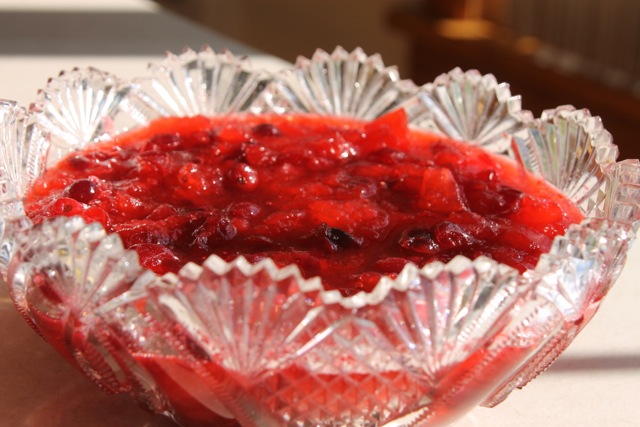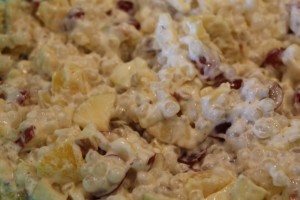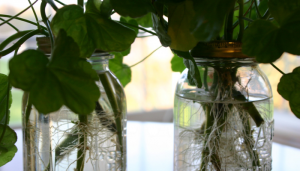
by jphilo | Nov 30, 2012 | Daily Life

Digital native. A reporter used the term in her article in the November issue of our local community magazine.The story was about raising a family in the digital age, and while reading two things grew increasingly clear: A digital native I’m not, and parenting has changed from the the olden days when our kids were little.
The article made me think about how my Grandma Josie, who lived from 1896-1996, felt during the technological revolution that radically changed her daily life. In her 99 years, she witnessed the advent and widespread use of
automobiles,
airplanes,
tractors and other engine-driven farm machinery,
telephones,
electricity,
indoor plumbing,
moving pictures,
phonographs,
radio,
black and white television,
color television,
automatic washers and dryers,
dishwashers,
air conditioning,
electric sewing machines, irons, and small kitchen appliances,
electric and gas cook stoves,
ice boxes,
and refrigerators.
She saw the first man go into space, watched several astronauts walk on the moon, and was still alive when personal computers and cell phones first entered the market. For decades, I had wondered how the constant changes made her feel. I marveled at how she adapted to change after change, how she welcomed and embraced many of them.
Reading the article about toddlers using iPads, teens programming their Direct TV connection to update them about Fantasy Football, and entire families dependent upon laptops and smart phones, I finally understood why Grandma eventually quit trying to change. At some point in last few decades of her life the gap between her life as an agrarian native and the lives of the technological natives around her grew too great. She couldn’t keep up anymore. She had to quit.
The gap between this 1950s technology native and the digital natives now entering the world is widening, too. It’s not yet a distance too wide to be traversed, but it is wide enough to increase my admiration and compassion for how beautifully and how long Grandma Josie adapted to change.
One day, I realized, the gap could grow so wide I’ll dig in my heels and refuse to change. Then again, maybe that won’t happen. I may not be a digital native, but I can apply for citizenship and study to become one.
A digital version of the test, of course.
Downloaded on my iPad.
Exported to my lap top.
Backed up on my external hard drive.
With an audio version on my iPod.
The gap is shrinking.
Watch out digi natives, here I come!
image courtesy of www.freedigitalphotos.net

by jphilo | Nov 28, 2012 | Recipes

Today’s recipe for cranberry-apple sauce is one my mom made for Thanksgiving for many years. Now that she’s done cooking, the responsibility falls upon who ever hosts the family meal. This year, the gathering was at our house, and I almost forgot about the traditional sidedish. Thankfully, I remembered two nights before the feast–in the middle of the night no less–and visited the grocery store in the morning to nab a package of Ocean Spray cranberries.
The recipe on the back of the bag was a big help since Mom never passed along her version. But she always added some chopped apples and then cut down the amount of sugar. Her directions were spot on, and the cranberries served in the cut glass bowl she loved were a big hit. Only a couple spoonfuls remained, and they added an extra bit of flavor to the baked oatmeal served for breakfast the next morning.
Cranberry-Apple Sauce
1 12 oz. package fresh or frozen cranberries
2 apples, peeled and chopped
2/3–3/4 cup sugar, depending on your taste
1 cup water
Put water and sugar in a medium saucepan and bring mixture to a boil. Stir until sugar is dissolved. Add cranberries and apples and return to a full boil. Lower heat to a low boil and cook for 10 minutes. Pour into a bowl. Chill for 2–3 hours before serving.

by jphilo | Apr 18, 2012 | Recipes

We celebrated Hiram’s birthday last month with grilled steak (thanks to our unusually warm weather) and strawberry shortcake (thanks to his determination to cut down on sugar due to advancing age). To prove I’m still young, I cut loose. Instead of using the recipe from the old Betty Crocker cookbook, I used my Grandma Josie’s recipe instead. Her recipe was a little sketchy, so below you’ll find her original recipe (submitted to our family cookbook by Cousin Danelle) and then my version of it.
Grandma Josie’s Original Strawberry Shortcake Recipe
1 small cup flour
2 tablespoons sugar
1 teaspoon baking power
1 egg
2 tablespoons butter
Stir in rich milk until semi-stiff. Bake at 350 degrees until golden and toothpick comes out clean. Top with fresh strawberries. Recipe can be doubled to fit in a 10 inch pan.
Grandma Josie’s Strawberry Shortcake
2 cups flour
2 tablespoons sugar
2 teaspoons baking powder
1/4 cup softened butter
2 eggs, beaten
3/4 cup milk
1 quart strawberries, washed, hulled, sliced and mixed with 2 tablespoons sugar
Heat oven to 400 degrees. Mix all dry ingredients in a medium bowl. Cut in butter. Add eggs and milk. Mix with a fork until all ingredients are moistened. Pour into a 9 inch square pan. Bake for 20 minutes until golden brown. Top with fresh strawberries.

by jphilo | Jan 4, 2012 | Family, Recipes

Today’s recipe comes from my mother’s mother, Josephine Newell Hess. She made huge batches of this tapioca fruit salad when her 8 children, their spouses, and her 39 grandchildren gathered for Thanksgiving and Christmas. Once she was unable to host the gatherings, the recipe was lost for many years. Finally, my sister and I were so hungry for it, we recreated the dish with help from Mom. Now we serve it at Thanksgiving and Christmas and eat it as greedily as hobbits do mushrooms.
Though the recipe below doesn’t make as big a batch as Grandma whipped up in her prime, it’s still enough to fill a large Tupperware bowl. Why make so much? Because we love to eat what’s left over the next morning for breakfast!
Holiday Tapioca Fruit Salad
1 box (8 ounces) large pearl tapioca
4 cups water, divided into two equal parts
1/2 cup sugar
1 20 ounce can pineapple tidbits
1 cup heavy whipping cream
1/4 cup sugar
1-2 tsp. vanilla
2 cups seedless red grapes, halved
1 cups chopped walnuts
2 apples, cored and diced
2 bananas, sliced
2 oranges, diced
The night before the meal, put tapioca in a medium bowl. Add 2 cups of water to the tapioca, cover, and let soak overnight.
Several hours before serving, place soaked tapioca in heavy saucepan. Add 2 cups water and the sugar. Cook over medium heat, stirring constantly, until most of the tapioca is translucent and the mixture is very thick. Pour into a large bowl and immediately add pineapple (juice and all) into the thick tapioca. Stir thoroughly. Put in the refrigerator or on the porch to cool.
An hour before serving whip the cream. Add sugar and vanilla. In a large bowl mix the tapioca, fruit, (except the bananas), and whipped cream together. Immediately before the meal, slice the bananas and stir them in, along with the nuts.

by jphilo | Apr 29, 2011 | Family

Roots may be Alex Haley’s claim to fame, but this spring I’m claiming the title for me and my house.
Why?
Because the cuttings from the family heritage geraniums I put in water more than a month ago have sprouted roots aplenty. This goofy gardener has four jars full of sassy green magic just waiting for the weather to warm up so they can be planted. And that’s not all!
During rooting season, I showered the future green giants with tender, loving care – changing their water weekly, removing dead leaves, and cutting off rotting stems. More than that, I paid attention to details like which slips rooted most easily, the attributes of the spots that rooted, and other scientific observations. Insights gleaned include the following:
- Tender, green stems root from joints where leaves have been stripped away.
- Hardened brown stems won’t root. Ever. At all. Period.
- If a long slip doesn’t sprout roots, cut a few inches off the bottom, strip a few more leaves away and give it another try. Following this method, my root rate was about 80%.
- Some slips won’t root, no matter what you do.
Pretty impressive, hmmm? I’m thinking a new career in agronomy is just around the corner. As soon my dislike of dirty hands, muddy shoes, weeding, hard work, and earthworms abate. In the meantime, I’m basking in the ancient approval of my ancestors.
My mother is proud of me.
My Grandma Josie would be proud of me.
So would her mother, Cora Rose Newell – the giver of the original geranium.
Partly for keeping family history alive. But mostly because I rooted 30 geranium slips which will save a good chunk of change when purchasing bedding plants in the next few weeks. Because the women in our family are a stingy clan. We are firmly rooted in the belief that the best things in life are free. Which means it’s time for a new project. How to make potting soil this spring instead of buying it from the store.
Just thinking of the potential savings makes me happy, happy, happy!






